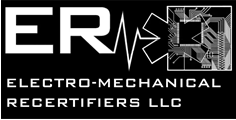 Health issues and short term safety
Health issues and short term safety
Floodwaters are likely to be contaminated with unknown chemicals, oils, sewage, fertilizers, bacteria, germs and silt.
Any of these can cause illness or death. Therefore, it is essential that you protect yourself and your family by following these steps:
- Stay out of the floodwater.
- Do not drink, cook, wash dishes or bathe in floodwater.
- Wear rubber boots, rubber gloves and goggles during cleanup of affected area.
- Remove and discard items that cannot be washed and disinfected such as, mattresses, carpeting, upholstered furniture, drywall, etc. These items can be a source of mold growth and should be removed from the home.
- Thoroughly clean and sanitize all hard surfaces such as flooring, concrete, molding, countertops appliances, and plumbing fixtures with hot water and laundry or dish detergent. Sanitize (sanitizing solution should consist of one capful of bleach in one gallon of water) ALL items that come in contact with floodwater. Cleaning is very important because even dead mold may cause allergic reactions in some people.
- Clean up any mold growth in your home and fix any water problem in your homesuch as leaks in roofs, walls, or plumbing. Controlling moisture in your home is the most critical factor for preventing mold growth.
- To remove mold growth from hard surfaces use commercial products, soap and water, or a bleach solution of no more than 1 cup of bleach in 1 gallon of water. Use a stiff brush on rough surface materials such as concrete.
- After completing the cleanup, wash your hands with soap and warm water. Use water that has been boiled for 1 minute (allow the water to cool before washing your hands). Or you may use water that has been disinfected for personal hygiene use (solution of 1⁄8 teaspoon [~0.75 milliliters] of household bleach per 1 gallon of water). Let it stand for 30 minutes. If the water is cloudy, use a solution of ¼ teaspoon (~1.5 milliliters) of household bleach per 1 gallon of water.
- Wash all clothes worn during the cleanup in hot water and detergent. These clothes should be washed separately from uncontaminated clothes and linens.
- Wash clothes contaminated with flood or sewage water in hot water and detergent. It is recommended that a laundromat be used for washing large quantities of clothes and linens until your onsite waste-water system has been professionally inspected and serviced.
- Do not plug a portable generator into an outlet, patch it into electrical wiring or connect it directly to a main electrical panel. Doing so could damage equipment, cause fires or cause power to flow into an electrical line, endangering persons in the home, neighbors and, possibly, utility crews working in the area.
Read the full article from its original source. http://www.ul.com/global/eng/pages/offerings/perspectives/regulator/electrical/additionalresources/flooding/

Recent Comments